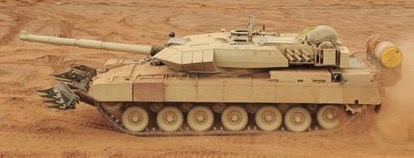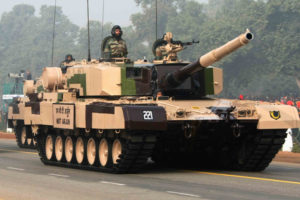Enough new tank news has popped up recently to justify a roundup.
The U.S. Army on Tuesday selected General Dynamics Land Systems to build a light tank meant to improve mobility, protection and direct-fire capabilities for Infantry Brigade Combat Teams.
The production deal is a key step forward for Army Futures Command, which has promised faster and more successful modernization programs through a competitive prototyping approach.
GDLS will deliver 26 vehicles initially, but the contract allows the Army to buy 70 more over the course of low-rate initial production for a total of $1.14 billion, according to the Army.
At least eight of the 12 prototypes used during competitive evaluation will be retrofitted to be fielded to the force, service officials in charge of the competition said.
The first production vehicles are expected to be delivered in just under 19 months. The first unit will receive a battalion’s worth of MPF systems — 42 vehicles — by the fourth quarter of fiscal 2025. The Army plans to enter full-rate production in calendar year 2025, according to GDLS.
It uses 105mm main gun (the same caliber used in the first iteration of the M1 Abrams) and weighs 35 tons.
The German company said the Panther KF51 (KF is short for Kettenfahrzeug, or tracked vehicle; the number indicates it falls into the 50-ton plus class) “is destined to be a game changer on the battlefields of the future.” It sets “new standards” in “lethality, protection, reconnaissance, networking and mobility,” the company boasted in a statement.
Jan-Phillipp Weisswange, Rheinmetall’s assistant head of public relations, told Breaking Defense that the vehicle was designed on the company’s own funds and not in response to a client’s request. Weisswange said the tank was not designed as a candidate for the Franco-German Main Ground Combat System (MGCS) project, launched in 2012 to replace the Leopard 2 and Leclerc main battle tanks, but rather for an export market.
Still, those two systems could provide a sense of where Rheinmetall could target potential sales. Users of the Leopard 2 are Austria, Canada, Chile, Denmark, Finland, Greece, Hungary, Indonesia, Netherlands, Norway, Poland, Portugal, Qatar, Singapore, Spain, Sweden, Switzerland, Turkey, while the Leclerc is used by Jordan and the UAE.
The Panther’s chassis uses components of the Leopard 2 hull, but the turret is entirely new. According to the company, the 59-ton vehicle has a maximum operating range of about 500 kms (310 miles).
The main armament is the Rheinmetall 130mm cannon, designed for the MGCS project’s Future Gun System (FGS). The FGS is automatically loaded from two revolver-type magazines which each hold 10 rounds of insensitive munition-compliant ammunition. According to the company, the FGS “enables a 50% longer kill range to be achieved [than 120mm] with an unrivalled rate of fire due to the autoloader performance.” It can fire kinetic energy rounds as well as programable airburst ammunition and practice rounds.
There’s also a integrated drone launcher option. Here’s a short video on the tank, showing the location of the autoloader in the rear turret bustle:
So, uh…. Dutch farmers have purchased a tank to use to block distribution centres. pic.twitter.com/rVvwb2pSA9
— Keean Bexte
(@TheRealKeean) July 5, 2022
Is actually a hoax.

